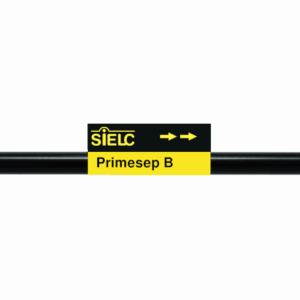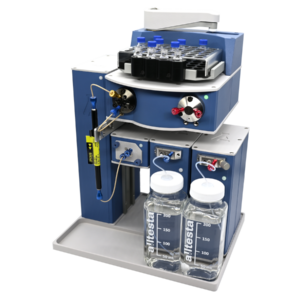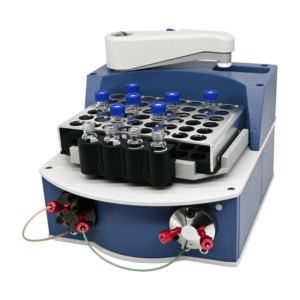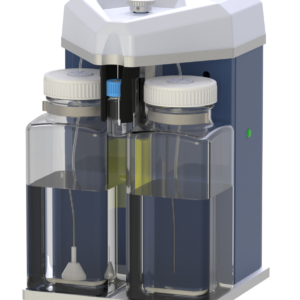HPLC Method for Methanesulfonic Acid on Primesep B by SIELC Technologies
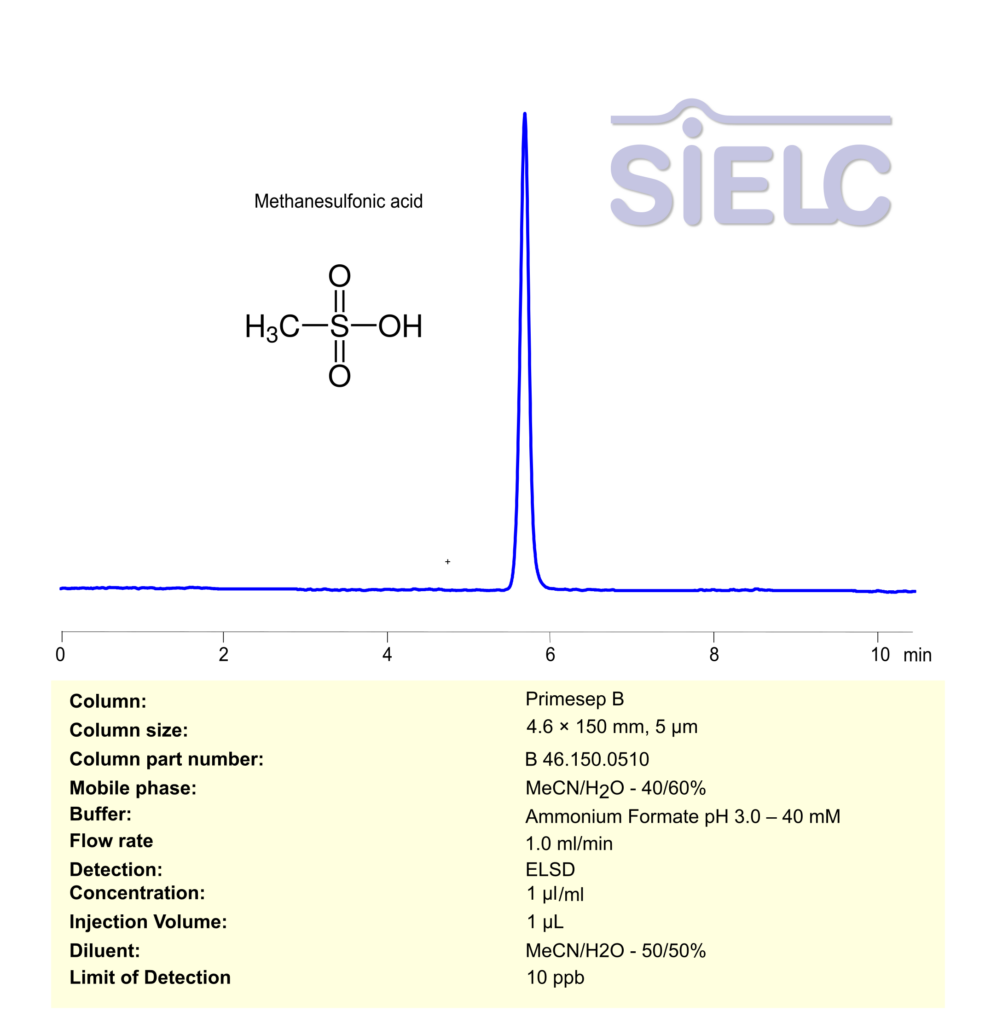
High Performance Liquid Chromatography (HPLC) Method for Analysis of Methanesulfonic Acid
Methanesulfonic acid (MSA) is an organosulfur compound with the chemical formula CH₄O₃S or structurally CH₃SO₃H. It is the simplest alkane sulfonic acid, consisting of a methyl group
Applications:
Catalysis: Used as a strong acid catalyst in organic and industrial chemical reactions, including esterifications and polymerizations.
Electroplating: An electrolyte component in electroplating baths, especially for tin and tin-lead plating.
Cleaning: Employed in industrial cleaning due to its strong acidity and non-oxidizing nature.
Pharmaceuticals: Used in the preparation of certain drugs, intermediates, and active pharmaceutical ingredients.
Alternative to Sulfuric Acid: Often preferred in specific applications because it is non-volatile and less corrosive to metals.
Methanesulfonic Acid can be retained, and analyzed using a Primesep B mixed-mode stationary phase column. The analysis utilizes a gradient method with a simple mobile phase consisting of water, acetonitrile (MeCN), and phosphoric acid as a buffer. Detection is carried out using UV.
| Column | Primesep B, 4.6 x 150 mm, 5 µm, 100 A, dual ended |
| Mobile Phase | MeCN 40% |
| Buffer | Ammonium Formate pH 3.0 – 40 mM |
| Flow Rate | 1 ml/min |
| Detection | ELSD, the nebulizer and evaporator temperatures 70°C, with a gas flow rate of 1.6 Standard Liters per Minute (SLM) |
| LOD* | 10 ppb |
*LOD was determined for this combination of instrument, method, and analyte, and it can vary from one laboratory to another even when the same general type of analysis is being performed.
| Class of Compounds | Acid |
| Analyzing Compounds | Methanesulfonic Acid |
Application Column
Primesep B
Column Diameter: 4.6 mm
Column Length: 150 mm
Particle Size: 5 µm
Pore Size: 100 A
Column options: dual ended

